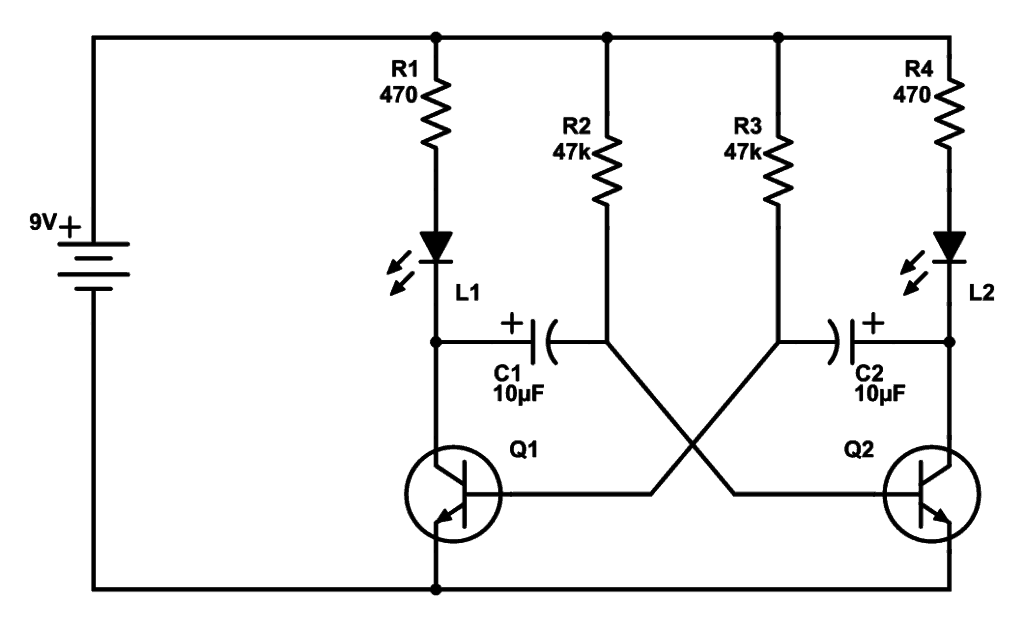This circuit makes two LEDs flash in an alternating pattern. You can use it, for example, for a model railroad crossing, or for eyes on a toy robot.
This is a classic circuit, called an astable multivibrator. The basic idea here is that the two transistors alternate between turning each other on and off. If you want to change the blinking speed, try replacing the two capacitors and/or the resistors R2 and R3 with other values.
Here’s a video of the circuit I built:
The Circuit Diagram

Find the components used in the table below.
| Part | Value | Note |
|---|---|---|
| R1, R4 | 470 Ω | Standard Resistor |
| R2, R3 | 47 kΩ | Standard Resistor |
| Q1, Q2 | BC547 | Any general purpose NPN transistor will work |
| C1, C2 | 10 μF | Polarized Capacitor |
| L1, L2 | Standard output light-emitting diode |
Are You Stuck?
Let me know your questions and comments in the comment field below
I built this circuit and it worked (the first time!!! – I could hardly believe it!). But the lights blink really, really fast. What resistor and capacitor values should I use to replace the current parts to get a slower, steadier blink rate? Thank you!
Hi DeeDee,
Congratulations! Well done =)
You can decrease the blinking speed by increasing the capacitor values. For example, you can try 100µF capacitors instead of 10µF.
Best,
Oyvind
I am having some trouble with this one. Both of my lights blink but instead of alternating they seem to pulse on and off with one always staying at least lightly lit. Any help would be greatly appreciated ! Thank you
Hi Will, what component values are you using? And are you using the BC547 transistor?
Hi the wiring diagram for the the railway crossing light shows ( near the lower right) the wires crossing over to the base of each transistor. Are the wires at this point not connected so that one wire passes over the other?
Thanks
Hi Mark, that’s correct, they are NOT connected, one passes over the other.